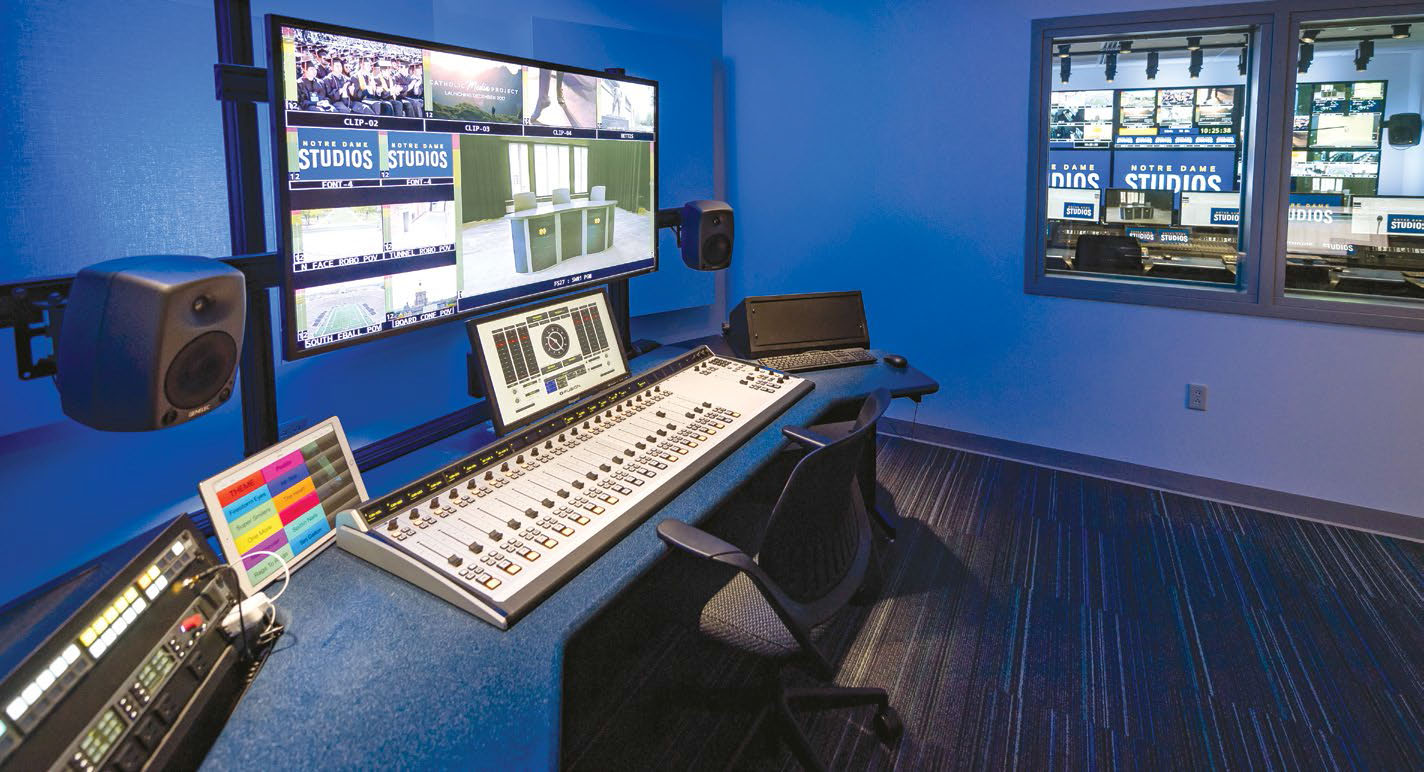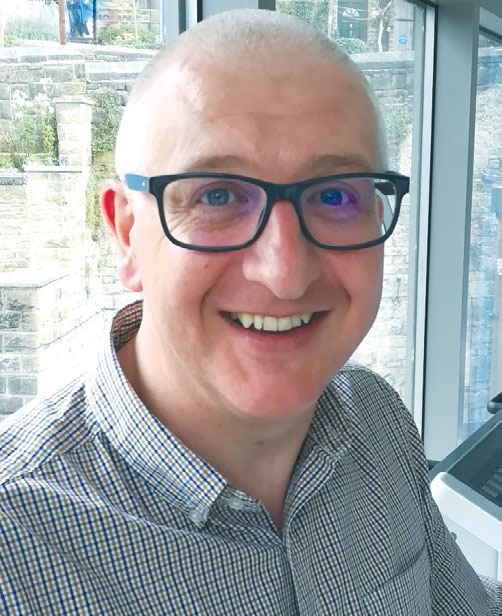Bringing Interoperability to Audio Over IP
LOS ANGELES—The universe of AES67- compliant products has expanded over recent years and with the interoperability standard now published in the SMPTE 2110 standards suite has become the “Rosetta Stone” of audio-over-IP. But while digital mixing console system products were among the first to adopt AES67, to what extent are end-users networking compliant products? What barriers to adoption remain, and what can be done to promote more AES67 network implementations?

ALL IP
“In the TV market, AES67 interoperability is part of almost every client conversation,” said Martin Dyster, vice president of business development-TV, TV Solutions Group, The Telos Alliance. Proof that AES67 is ready for primetime can be seen at University of Notre Dame Martin Media Center, a benchmark for what is possible in an all-IP, multivendor environment, where his company supplied the console and routing pieces, Dyster said.
Across the campus-wide media production environment, says Dyster, “All video and audio are transported as IP from the cameras and mics to PCR, and in the case of the Telos Alliance Axia Fusion consoles, there’s not a physical router in sight. Everything is routed at switch level, so it truly is a system achieving what was intended with AoIP all along.”
The installation includes Evertz core video and control elements. “The interchange of around 450 AES67 streams between it and the audio production system is seamless,” Dyster says. “Other vendors in this installation include Riedel, who supplied an AES67-equipped Artist system. Other examples where we’ve connected at AES67 level include products like the Genelec 8340 IP monitors—but any AES67 compliant product should work fine.”
AOIP IS THE GOAL
Don Bird, vice president of Business Development and Marketing for Lawo North America, agrees that AES67 is a basic requirement in almost every customer project. “In some cases, as a natural subset of their request to deploy a complete ST2110-compliant infrastructure, but even in those projects involving an upgrade of existing facilities where AoIP is the goal and the rest of the production pipeline is going to be migrated to IP over time,” he says.
The professional video industry's #1 source for news, trends and product and tech information. Sign up below.
Lawo has been providing AES67 capabilities across distributed and remote production architectures as well as in local studio environments for some years now, according to Bird. “This is nothing new at this point, as customers clearly recognize the savings in cost, flexibility and efficiency of operation.”

Phil Owens, senior sales engineer, for Wheatstone in New Bern, N.C., has observed less enthusiasm for AES67 thus far. “Customers are primarily concerned with their central infrastructure,” he says. “AES67 tends to address add-ons, in most cases. This will change in the TV market as SMPTE 2110 and its audio component, SMPTE 2110-30, become more prevalent.”
Owens has primarily seen client interest in interfaces with a live sound component in a system, and interfaces with some AES67- or Dante-capable intercom systems. “And we have seen smaller local studio implementations, such as interfacing with Dante-equipped mic preamps via AES67,” he reports.
“We are currently working on two university projects that have an auditorium equipped with a Dante-equipped live sound board tied into their broadcast facility via AES67,” adds Owens. “Another university has expressed interest in interfacing a Wheatstone system with an RTS intercom using their Omneo protocol, which is in fact Dante; that will be an AES67 interface.”

Calrec Audio has supplied AoIP networks to several broadcasters for facility-wide installations, reports Dave Letson, the company’s vice president of sales. “More often, though, we are seeing pockets of deployment in POC or smaller applications, so the broadcaster or facility can cut their teeth and gain an understanding of SMPTE 2110 networks.”
The real benefits and savings will come from greenfield builds that can implement the networking facilities from the get-go, Letson believes. Thus, some manufacturers have developed products, such as Calrec’s H2-IP Gateway devices, to bridge proprietary IP infrastructures and create hybrid networks.
That said, Calrec consoles are being networked with products such as Sonifex’s AES67-based monitor pre-hear products and Grass Valley routers, says Letson. “Calrec’s AoIP I/O solutions allow any piece of third-party equipment that is AES67 compatible to talk to Calrec’s I/O boxes and enter the [company’s proprietary] Hydra2 domain.”
BARRIERS TO ADOPTION
Manufacturers almost universally note that AES67’s lack of discovery, control and connection management, which were never part of the standard’s brief, are a barrier to adoption. Lawo’s Bird observes, “We offer a range of products that enable us to provide all-AES67 network infrastructures for our customers, so we don’t really encounter any barriers in that respect.”
“AES67 is an audio-only interface that has to be set up manually by entering a number of stream parameters at both the send and receive ends,” says Owens, “or ‘semi-manually’ by using an SAP utility to advertise those stream parameters to the various endpoints. Control—logic events—has yet to be addressed, although yet another standard, AES70, is a possible solution.”
Letson points to a recent survey by Grass Valley that indicates that IP adoption is slower than previously forecast. Two-thirds of respondents stated a preference for a hybrid approach, with cost a major concern when considering a move to IP. “Cost is obviously a barrier unless you are already planning to replace equipment,” he says, including the costs to deploy completely new infrastructure and train staff, and costs incurred through disruption.
“A fear of the unknown and a feeling that AoIP is brand new and unproven” also militate against wider or faster adoption, Dyster suggests.
The Networked Media Open Specification [NMOS] is currently being finalized. The IS-04 part of that spec addresses discovery, and the IS-05 part addresses connection management, according to Owens. “NMOS will make AES67 much easier to set up and use,” he said.
Calrec, like many other manufacturers, is developing a stream manager, Calrec Connect, which will allow complex network information to be displayed and streams to be created in a user-friendly manner, according to Letson. “This helps to reduce the burden of training needed,” he said.
Bird noted the importance of ongoing training in fostering adoption. “Through involvement in associations like AIMS and various technical recommendation groups and standards bodies we put great emphasis on education and awareness,” he said. “We encourage any customers interested in deploying an AES67 infrastructure to have open dialog with their consultants, integrators, and equipment providers to verify that all components specified are fully supporting the standard in an interoperable way.”
Steve Harvey began writing for Pro Sound News and Surround Professional in 2000 and is currently senior content producer for Mix and a contributor to TV Tech. He has worked in the pro audio industry—as a touring musician, in live production, installed sound, and equipment sales and marketing—since November 1980.
